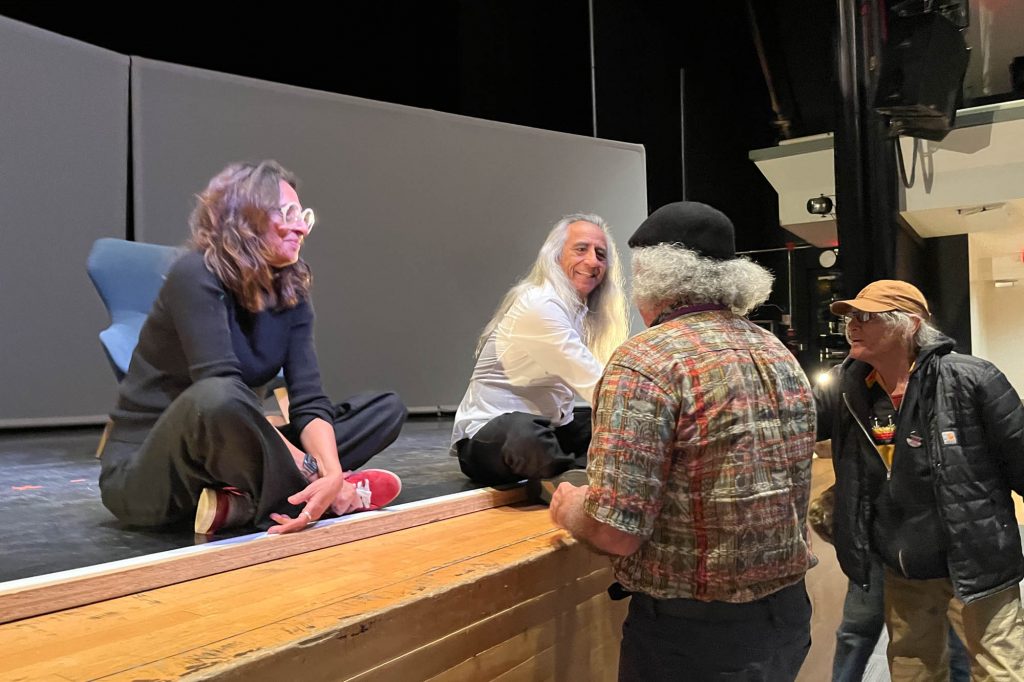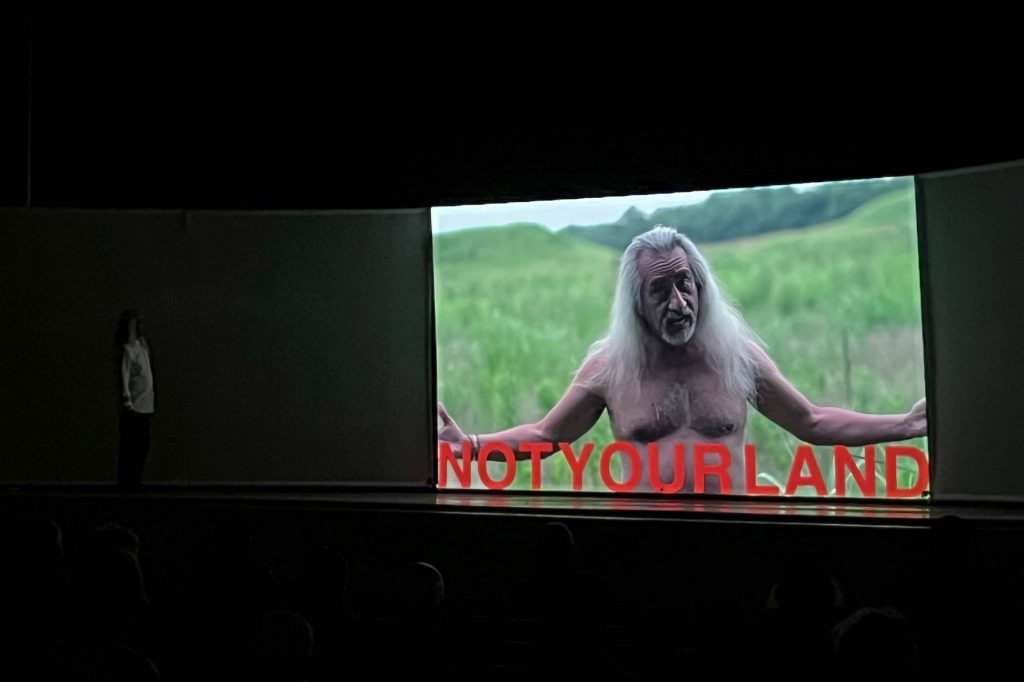Performance artist explores tribal sovereignty through the context of historic court cases
Performance art explores tribal sovereignty through historic court cases
Artist George Emilio Sanchez highlights the withstanding impact of Supreme Court cases on Native Nations.

This past weekend Syracuse University hosted a three-day conference to analyze the legal and theological theories of the Doctrine of Christian Discovery. This year marks the 200th anniversary of U.S. Supreme Court Decision Johnson v. McIntosh, which set a foundation for future cases of property law and tribal sovereignty in the United States.
The conference’s main sponsorship is a three-year grant awarded to the university by the Henry Luce Foundation. On Saturday evening, Goldstein Auditorium opened its doors for conference attendees, including SU and ESF students, to watch George Emilio Sanchez’s solo performance, In the Court of the Conqueror.
As the second installment of Sanchez’ larger series, Performing the Constitution, the artist combined oral, visual, and audio storytelling in an hour-long performance. Sanchez worked in collaboration with visual artist Patty Ortiz, traveling to the seven states where these landmark Supreme Court cases took place.
Sanchez combined the historical with personal, reflecting on the exploration and discovery of his own Ecuadorian and Indigenous identities. In conjunction with projections of overlapping video and graphics on the screens behind him, Sanchez details specific court cases such as Oliphant v. Suquamish Indian Tribe and how they are still used to diminish the tribal sovereignty of Native Nations today.

To conclude the performance, Sanchez referenced the folk song, “This Land is Your Land,” by Woody Guthrie, a well-known song in the U.S. He changes the lyrics and gives a new rendition, singing, “We stole these lands for you and me,” and calls on the audience to sing the line back. As Sanchez stepped back and bowed his head as the lights dimmed, the audience began to applaud.
Following the performance was a short Q&A session with Sanchez and Ortiz. They responded to several questions and comments, including one from Associate Justice Lizbeth González, who called Sanchez’s legal knowledge, “profound.” An appellate judge for the 1st Department of the New York Supreme Court, Justice González asked how to increase the exposure to Indigenous laws in American legal education.
In response to the inquiry, Sanchez said that it’s essential that those in the judiciary and legal systems have basic courses from day one about, “the people that were here first.”
The two artistic collaborators remained afterward to continue intimate conversations with audience members. Sanchez said their next scheduled performance of In the Court of the Conqueror is scheduled for 2025.
